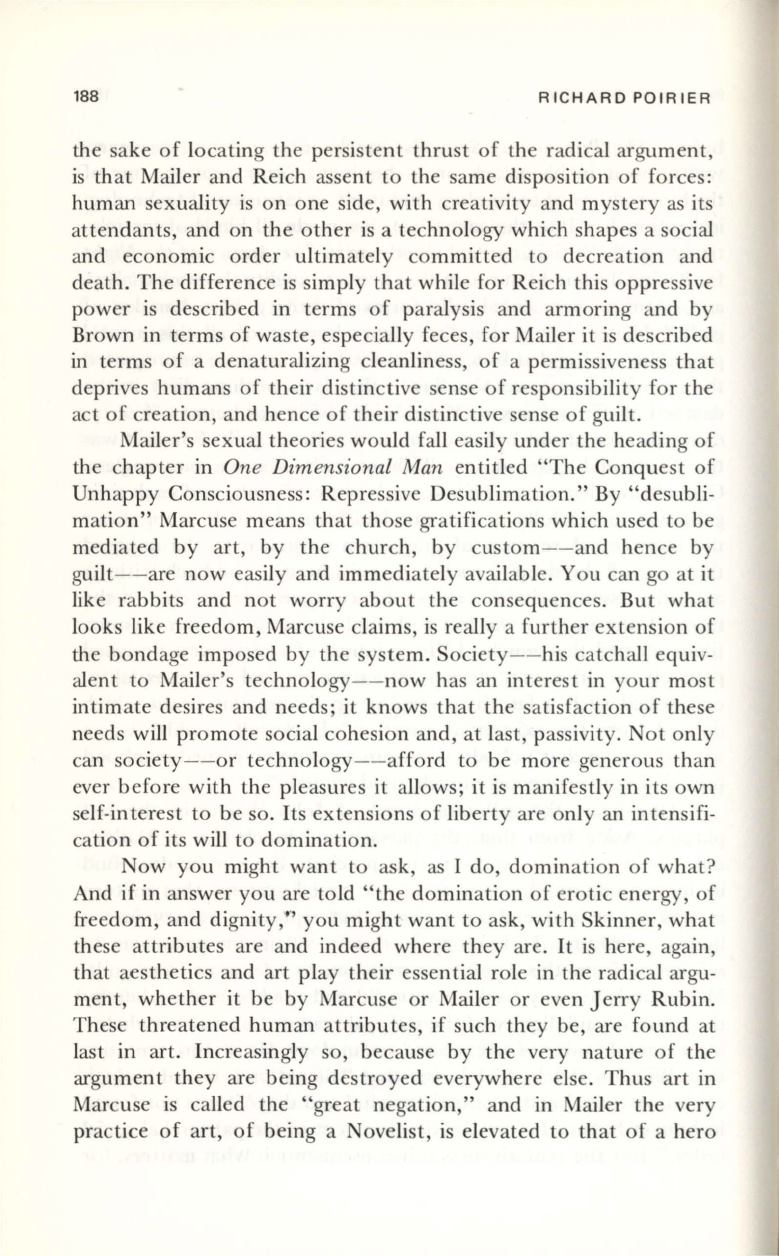
188
RICHARD POIRIER
the sake of locating the persistent thrust of the radical argument,
is that Mailer and Reich assent to the same disposition of forces:
human sexuality is on one side, with creativity and mystery as its
attendants, and on the other is a technology which shapes a social
and economic order ultimately committed to decreation and
death. The difference is simply that while for Reich this oppressive
power is described in terms of paralysis and armoring and by
Brown in terms of waste, especially feces, for Mailer it is described
in
terms of a denaturalizing cleanliness, of a permissiveness that
deprives humans of their distinctive sense of responsibility for the
act of creation, and hence of their distinctive sense of guilt.
Mailer's sexual theories would fall easily under the heading of
the chapter in
One Dimensional Man
entitled "The Conquest of
Unhappy Consciousness: Repressive Desublimation." By "desubli–
mation" Marcuse means that those gratifications which used to be
mediated by art, by the church, by custom--and hence by
guilt--are now easily and immediately available. You can go at it
like rabbits and not worry about the consequences . But what
looks like freedom, Marcuse claims, is really a further extension of
the bondage imposed by the system. Society--his catchall equiv–
alent to Mailer's technology--now has an interest in your most
intimate desires and needs; it knows that the satisfaction of these
needs will promote social cohesion and, at last, passivity. Not only
can society--or technology--afford to be more generous than
ever before with the pleasures it allows; it is manifestly in its own
self-interest to be so . Its extensions of liberty are only an intensifi–
cation of its will to domination.
Now you might want to ask, as I do, domination of what?
And if in answer you are told "the domination of erotic energy, of
freedom, and dignity,..' you might want to ask, with Skinner, what
these attributes are and indeed where they are. It is here, again,
that aesthetics and art play their essential role in the radical argu–
ment, whether it be by Marcuse or Mailer or even Jerry Rubin.
These threatened human attributes, if such they be, are found at
last in art. Increasingly so, because by the very nature of the
argument they are being destroyed everywhere else. Thus art in
Marcuse is called the "great negation," and in Mailer the very
practice of art, of being a Novelist, is elevated to that of a hero


